As embedded researchers at the Health Division of Pokhara Metropolitan City (PMC) in Nepal, we had the opportunity to visit eastern Nepal and the Sikkim state of India in April of this year. This was the cross-learning visit organized by the metropolitan city as part of the implementation of the annual work plan and budget. We were accompanied by 31 staff members from Pokhara Metropolitan City. During our visit, we had the chance to explore various locations, including Suryodaya Municipality, Itahari Sub-Metropolitan City, cultural and touristic sites in Illam, Dharan, and Sunasari in eastern Nepal, as well as Sikkim state in India. The main objective of this visit was to foster mutual understanding and familiarity regarding the challenges, problems, and innovative practices within the healthcare systems of these regions. As embedded researchers working on an urban health research project, our specific learning objective was to gain insights into the health system responses concerning non-communicable diseases. In this blog, we have chronicled our experience, highlighting the harmonious blend of learning and enjoyment.
Sikkim: Paradise in the eastern Himalayas
Our journey began in Pokhara. After spending a night on the bus, itself on the way, we reached Kakarbhitta, the eastern border between Nepal and India the next day. Then, we set off in rental jeeps towards the Sikkim state of India. As we traversed through the mesmerizing landscapes of snowy mountains, green forests, colorful prayer flags fluttering in the wind along the road, dazzling waterfalls, and unique cultures at the foothills of Kanchenjunga, we marveled at the beauty of the region. As we continued our journey across West Bengal and Sikkim state of India through the mountainous road along the Teesta River, we were reminded by the history of Nepal as the eastern border of Nepal then up to Teesta River some 200 years ago, reflected in the famous Nepali poetry song “Paschim Killa Kagada, Purbama Teesta Pugethyouin”. We reached Gangtok in the late evening and had a pleasant soothing night stay.
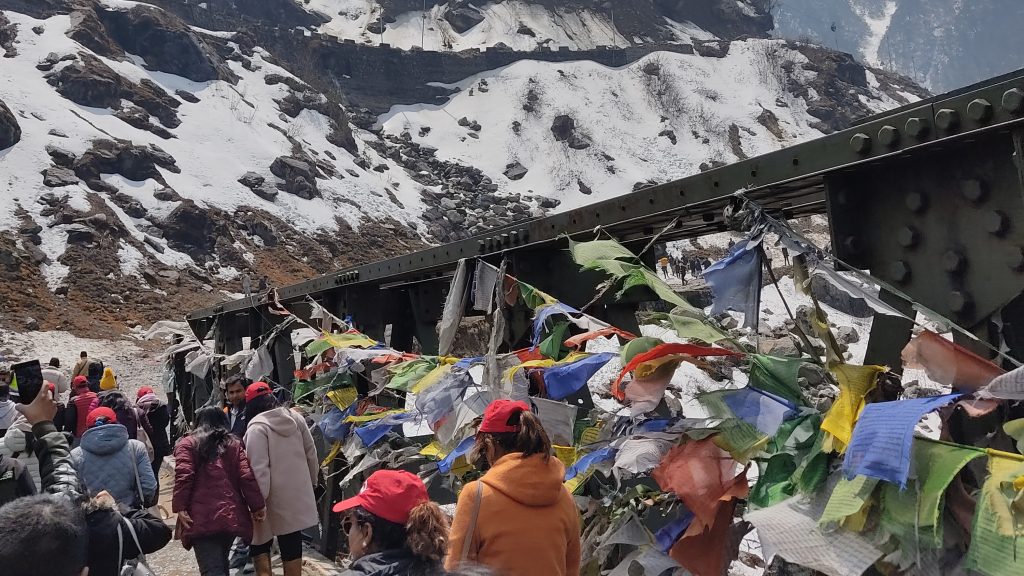
The next day, we discovered Gangtok, the fascinating city of Sikkim. We moved for site scene and could observe the cleanliness, greenery, and well-preserved natural environment in the city. We had a pleasing experience of local falls, viewpoints, monasteries, botanical gardens, and the zoo. We found tourism to be the major source of livelihood. Nepali was the language of everyone. People were tourist-friendly, polite, and cooperative. We did not miss the opportunity to visit the famous MG road, Lal bazar and other touristic destinations there and got our moments captured. We experienced the unique blend of Nepali, Sikkimese and Tibetan cultures in the streets and restaurants of Gangtok. In the evening, we also had a fully entertaining cultural program that night. The following day, we moved to northern Sikkim to observe Tsomgo Lake (locally known as Chhangu). The memorable experience of playing with snowballs, immersing in the deep snow, engaging in friendly banter, dancing, and singing in the snow made it truly unforgettable. We were fully immersed in the beauty of the surroundings.
Sikkim Health System: Access at the core
Besides sightseeing, we also managed to observe and learn about the health system in the region. We got an opportunity to interact with local people at Gangtok. The people we talked to appreciate the efforts of the government of Sikkim in providing free health services, supporting the poor and achieving remarkable gains in health infrastructure throughout the state in recent years and decades. We were interested to explore more about the health system of Sikkim. We did some background desk reviews and found some interesting insights.
Table: Health Indicators of Sikkim
| Key Indicators | Value |
| Crude Birth Rate | 16.5/1000 |
| Crude Death Rate | 4.2/1000 |
| Neonatal Mortality Rate | 5 |
| Infant Mortality Rate | 11.2 |
| Under 5 mortality Rate | 11.2 |
| Total Fertility Rate | 1.1 |
| Full Immunization Coverage | 80.6% |
| Institutional Delivery | 94.7% |
| Contraceptive Prevalence Rate (Modern Method) | 54.9 |
Sikkim currently consists of six districts, accommodating a population of approximately 6.1 million people. Of this population, around 75% reside in rural areas. The state boasts one of the most robust primary health infrastructures in India, featuring a well-established system of healthcare facilities. The state government of Sikkim plays a pivotal role as the primary healthcare provider, operating a network of government hospitals and health centers. As stated on the official website of the government of Sikkim, the healthcare infrastructure includes one state referral hospital, four district hospitals, two community health centres, 24 primary health centres, 147 primary health sub centres, five district tuberculosis centres, and one Centre referral hospital.
We discovered that the healthcare system in Sikkim operates across three distinct layers. The first layer comprises Primary Health Care Sub centres, Primary Health Care Centers (PHCs), and community health centers (CHCs), which provide basic health services such as preventive and curative care including immunization, maternal and childcare. The second layer encompasses hospitals and district referral hospitals, which provide basic health services along with inpatient care, diagnostic services and specialized services like maternal and child health, general medicine, orthopedics, and surgery. And finally, we found the referral hospitals situated in the capital city of Gangtok, serving as the central hub for advanced medical services. With a range of specialized treatment services and expert doctors, referral hospitals ensure comprehensive healthcare with the government covering all costs. In addition, Sikkim has implemented mobile medical health units that effectively reach remote areas and underserved communities, guaranteeing equitable access to healthcare for all. These units deliver essential services, including medicines, to individuals in need, without any financial burden.
A notable aspect of primary health care in Sikkim is its commitment to providing healthcare services and medications to the Sikkimese population free of cost. Likewise, the state government has made increasing investments in the health sector in recent years and recently there have been improvements in the quality and accessibility of healthcare services showing some positive trends in health outcomes such as low Infant Mortality Rate, Neonatal Mortality Rate, Under 5 Mortality Rate and comparatively high institutional delivery. Low access to health services due to remote location and difficult terrain, however, is the major challenge.
Health System in Eastern Nepal: Similar Issues, common challenges
After spending two beautiful days and nights in Sikkim, we got back to Nepal in Illam Pashupati Nagar. We were welcomed by the beautiful tea gardens in Eastern Nepal. The picturesque view and delightful boating of Antu Pokhari and the beautiful sunrise experience at Antu danda were memorable. In Kanyam, we spent more time capturing the moments, making TikTok videos in folk songs, and enjoying the cultural attire and experiencing the unity among the diversity of Nepal. During our trip to eastern Nepal, we got the opportunity of familiarizing ourselves with the local health system of two municipalities- Suryodaya municipality of Illan district and Itahari sub metro polytan city of Sunsari district.
Visit to Fikkal Hospital: First, we visited the Fikkal hospital situated at the Suryodaya municipality of Illam district. It is a recently upgraded hospital owned and managed by the municipality and serves around 150 patients every day. Fikkal Basic Hospital has recently been transformed into a 5-bed facility, strategically positioned to serve a population of approximately 55,000 including the population of adjoining palikas. Although it currently operates from older buildings, a new structure is under construction, with plans to expand to a 15-bed capacity.
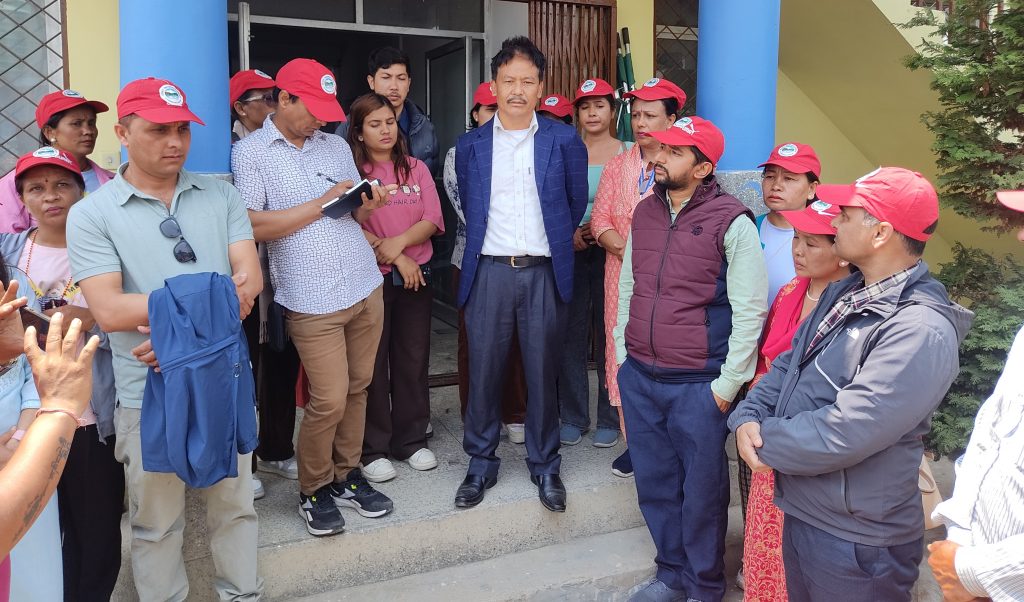
The medical superintendent’s position is vacant, and the hospital is run by medical officers in contract. Current services from the hospital include registration, emergency care, OPD services, laboratory, dental care, pharmacy, X-ray, ECG, and telemedicine. Currently indoor and 24-hour service is not available. Eye care service is an additional service in the hospital. Digital X-ray and autoanalyzer services are also available. In addition to the free health services and services from health insurance programs, the hospital also provides telemedicine services. Despite doing good in delivering the service, the hospital faces financial challenges, as the annual budget provided by the municipality, NRs 50,000 annually falls short of meeting operational needs. We found that Suryoday municipality has enacted the health service act locally.
Visit to Itahari sub-metropolitan city: Next day, we visited the health division of Itahari metropolitan city the next day. The interaction between Pokhara Metropolitan City health division officials and Itahari metropolitan city officials started with an exchange a brief introduction. A group of officials including Hemkarna Poudel, the mayor, administrative officer and health division chief and officials from Pokhara Metropolitan city shared experience, best practices, and challenges.
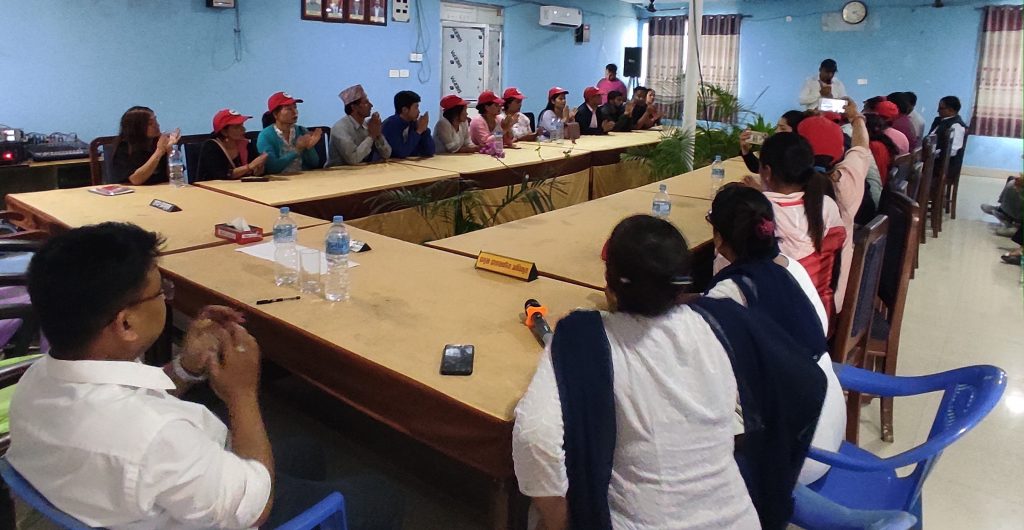
In Itahari Municipality, we found that there were good achievements in preventive health programs except for safe motherhood. The palika was promoting institutional delivery with additional incentives for pregnant women. Itahari has a vast catchment area with a population of 2,11000 spread across 20 wards. Besides the one PHC (now upgraded to hospital) and 4 health posts, the city has established basic health service centres in all wards, and they are run through own buildings. Itahari has a 15-bed basic hospital and is managed locally through a management committee. In addition to free health services, the hospital also provides health insurance services. Other pro-poor services are provided based on the decision of the local management committee. Furthermore, non-communicable diseases are a focus, with screening programs implemented across all wards for adults above 40 and there are plans to introduce dialysis service in the basic hospital. Insufficient infrastructures, inadequate human resources both at the health division and hospital, and financial shortfall to operate basic hospitals were some of the problems the local health system is facing in Itahari. Likewise, the poor were deprived of state-provided support for severe illness due to the halt of reimbursement from the central government.
Major takeaway
During the visit, insights were gained into the public health landscape of the visited areas. Local resource mobilization was identified as a key driver behind the expansion of basic health services, but a common concern was the lack of human resources to meet increasing demands. Staffing shortfall emerged as a critical need for effective healthcare delivery. Balancing curative services and resource allocation was a challenge in upgrading basic health facilities to hospitals. Health insurance programs played a vital role in supporting the care of non-communicable diseases (NCDs) within primary hospitals. However, the rise of NCDs added strain to the healthcare system. The visited areas lacked specific policies, guidelines, and implementation frameworks related to the local health system, highlighting the need for further development in local health governance.
The cross-learning visit to Eastern Nepal and Sikkim was a visit blended with fun and a lot of insights. The remarkable initiatives in Sikkim and the innovative practices observed in various municipalities inspired us to innovate further. While our primary focus was on learning the health systems, it was a pleasure to explore the scenic landscapes, monasteries, temples, and tourist sites that offered aesthetic, cultural and spiritual experiences. We extend our heartfelt gratitude to the Health Division of Pokhara Metropolitan City and HERD International for organizing and supporting the enlightening tour.




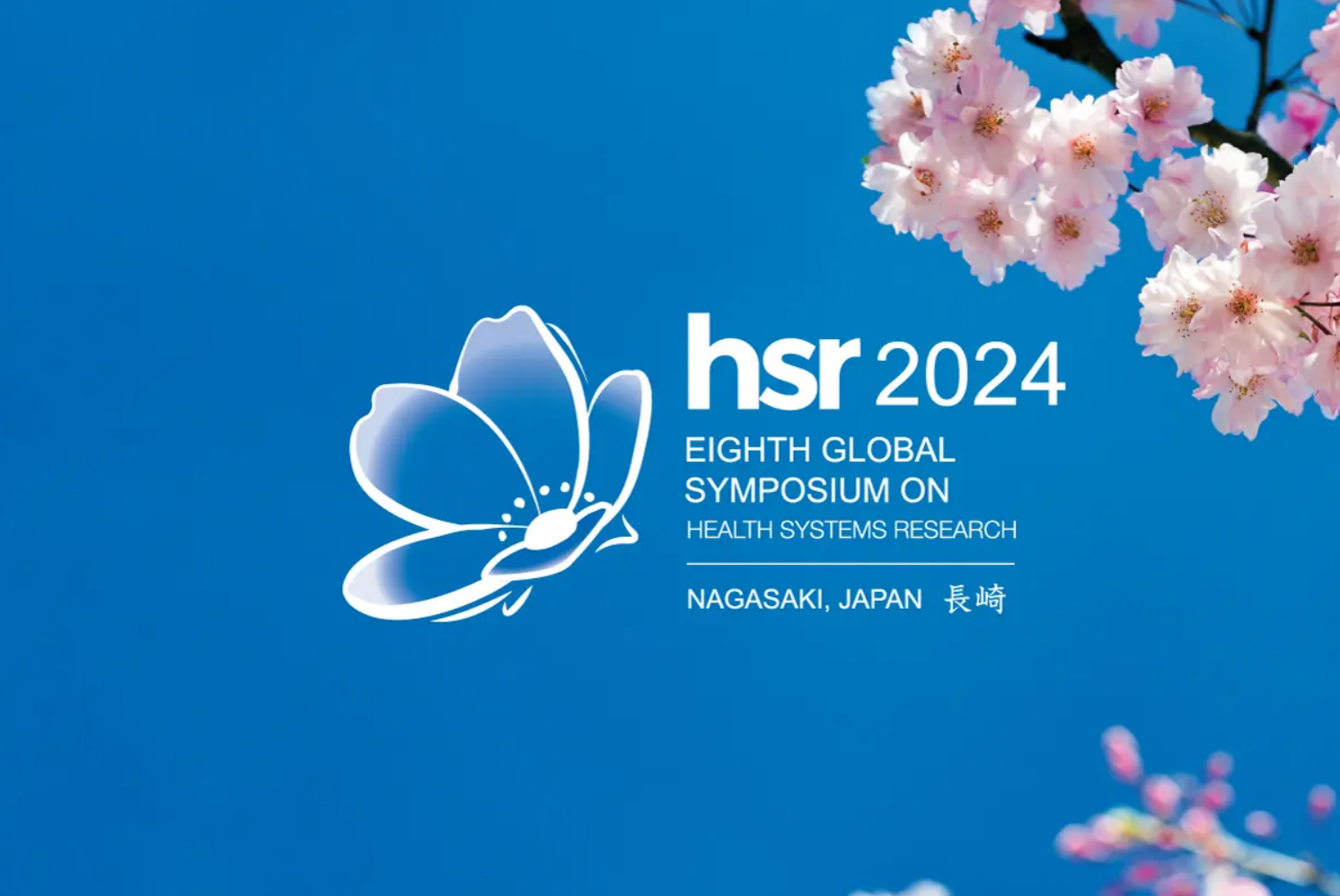
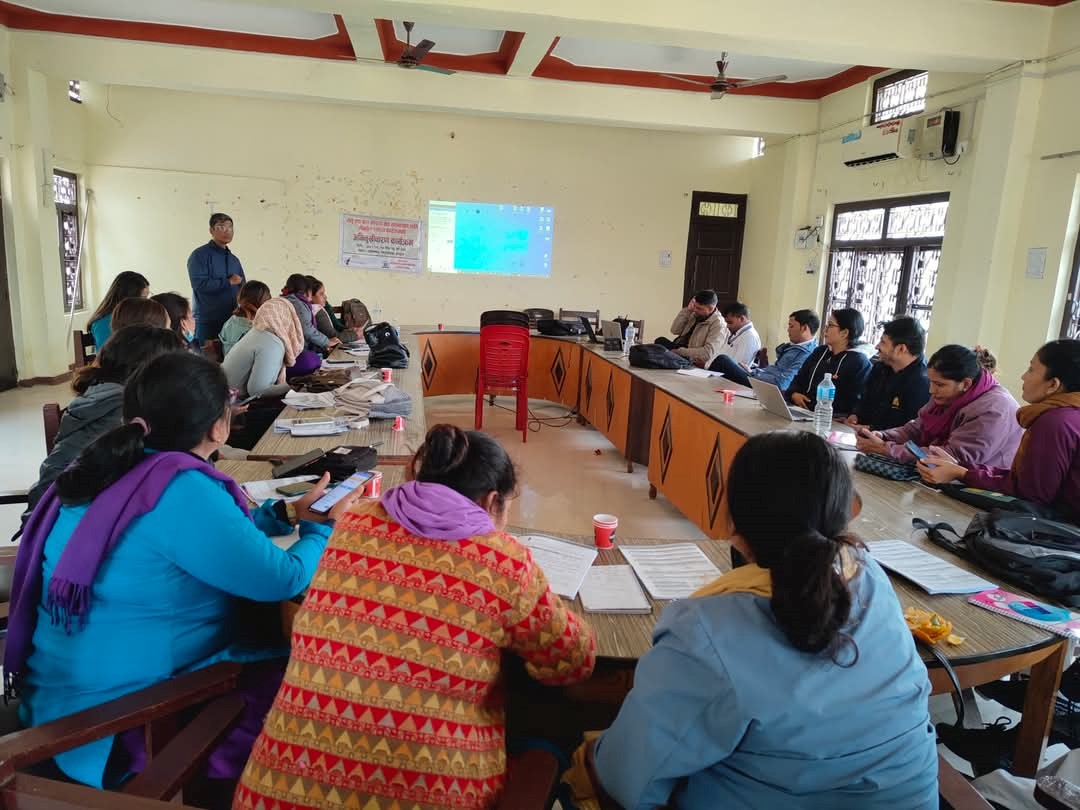







Comments (0)
No comments found.